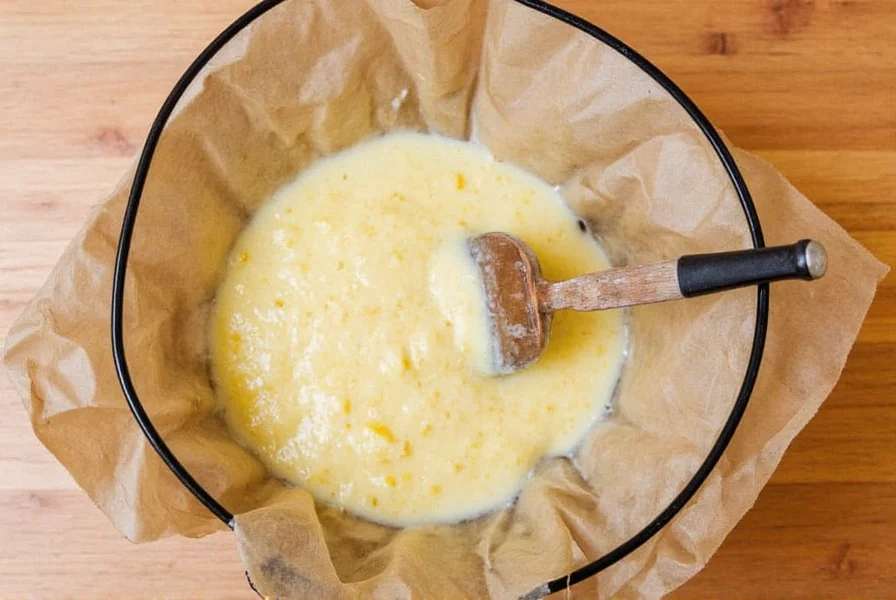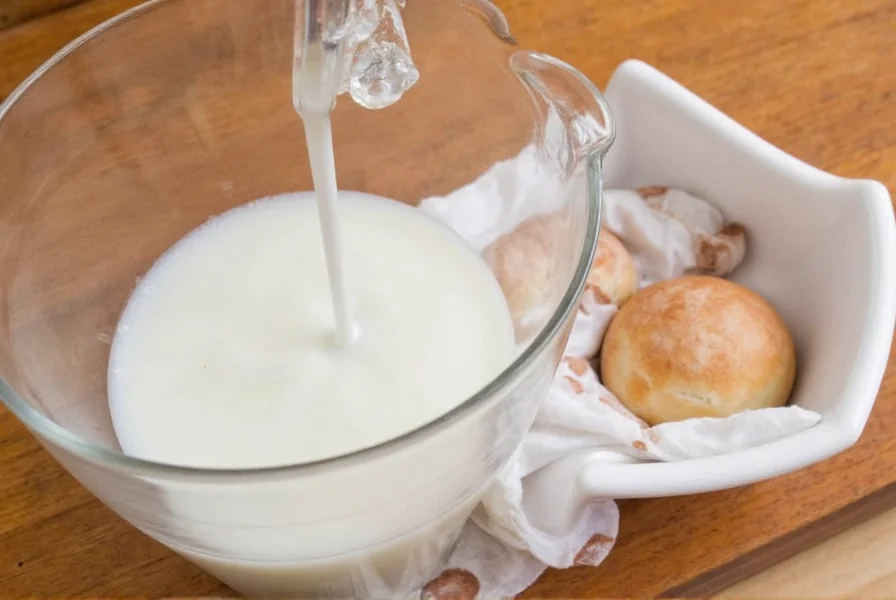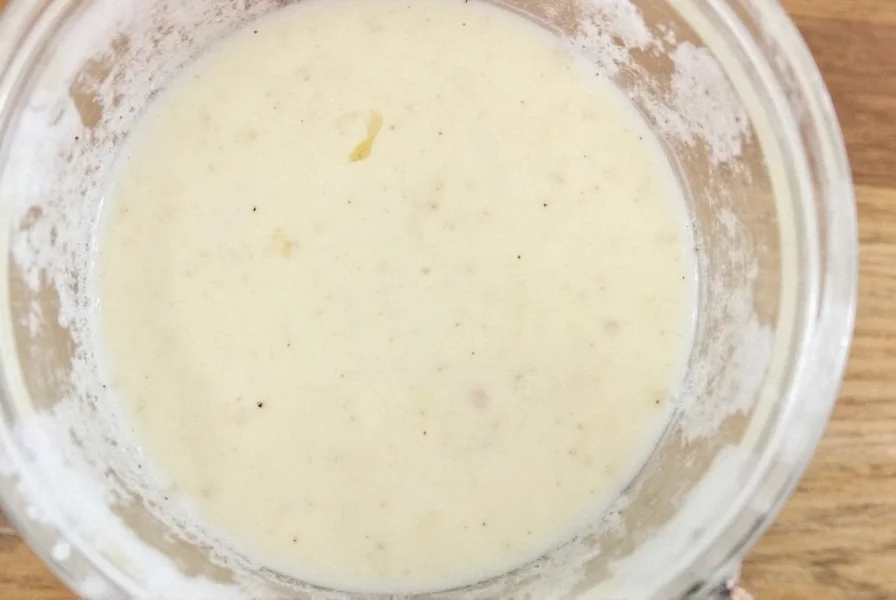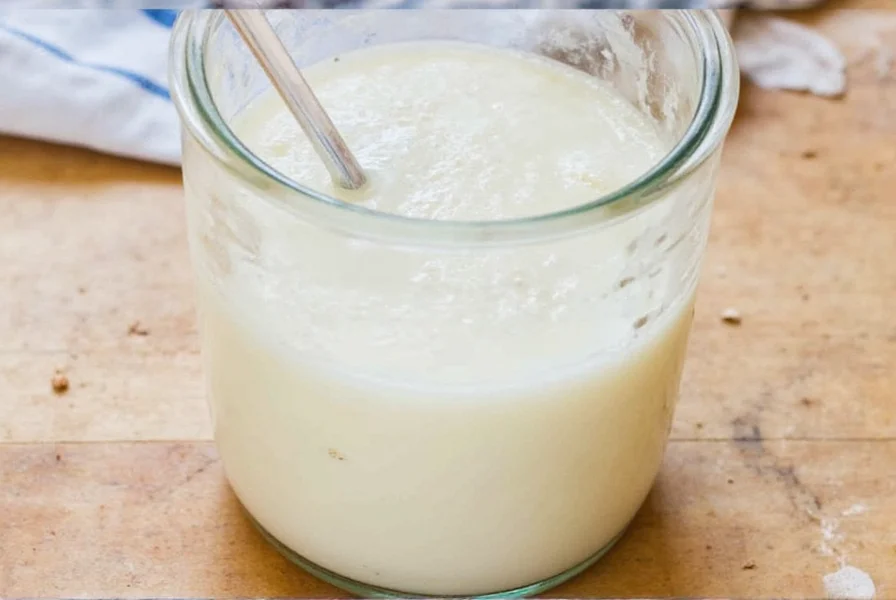Table of Contents
What is Buttermilk Brine?
Buttermilk brine is a flavorful liquid made by combining buttermilk with salt and seasonings, primarily used for tenderizing and flavoring meats and vegetables. Unlike regular buttermilk (which is simply cultured milk), buttermilk brine contains added salt and spices to enhance moisture retention and flavor penetration. The acidity in buttermilk breaks down proteins in meat, allowing it to retain moisture and absorb flavors more effectively. This makes it ideal for creating juicy, tender results in everything from fried chicken to roasted vegetables.
Buttermilk brine is different from pickle brine, which uses vinegar's acetic acid for sharper tang. Buttermilk brine uses dairy's lactic acid for tenderizing with creamy notes, making it particularly effective for poultry and seafood. According to USDA food safety guidelines, proper handling and storage of buttermilk brine is critical to prevent bacterial growth and foodborne illness.

How to Make Buttermilk Brine
Making buttermilk brine at home is simple and customizable. Here's a basic recipe that yields about 2 cups:
- 2 cups buttermilk
- 1/4 cup kosher salt
- 2 tablespoons sugar (optional)
- 1 tablespoon garlic powder
- 1 tablespoon onion powder
- 1 teaspoon black pepper
- 1 teaspoon dried thyme
- 1/2 teaspoon paprika (optional)
Instructions:
- In a medium bowl, whisk together all ingredients until salt and sugar are fully dissolved.
- Taste and adjust seasoning as needed. For stronger flavor, add more salt or spices.
- Store in an airtight container in the refrigerator for up to 5 days.
Vegan alternative: For plant-based options, combine 2 cups unsweetened almond milk with 2 tablespoons lemon juice. Let sit for 5 minutes to curdle, then add salt and spices as above.
Proper Storage of Buttermilk Brine
Storing buttermilk brine correctly is crucial for food safety and effectiveness. According to FDA food safety guidelines, improper storage can lead to bacterial growth and foodborne illness. Here are key tips:
- Refrigerate immediately: Once made or purchased, store in an airtight container in the refrigerator at or below 40°F (4°C). Never leave at room temperature for more than 2 hours.
- Use within 5-7 days: Commercial buttermilk brine typically lasts about a week in the fridge. Homemade versions should be used within 5 days for best quality and safety.
- Avoid freezing: Freezing can alter the texture and flavor of buttermilk brine. If you must freeze it, do so in small portions and thaw it in the refrigerator before using.
- Keep away from strong smells: Buttermilk brine can absorb odors, so store it away from pungent foods like garlic or onions.
- Food safety tip: Always use clean utensils when handling buttermilk brine. If you notice any off smell, mold, or discoloration, discard it immediately.

Creative Uses for Buttermilk Brine
While buttermilk brine is most commonly used for meats, it has many other creative applications in the kitchen. Here are a few ideas to inspire your next culinary adventure:
- Fried Chicken: Soak chicken pieces in buttermilk brine for 24-48 hours in the refrigerator before coating them in flour and frying. The result? Crispy, juicy chicken that's packed with flavor. Always keep chicken refrigerated during brining to prevent bacterial growth.
- Roasted Vegetables: Brush or soak veggies like potatoes, carrots, or zucchini in buttermilk brine before roasting. It enhances the natural sweetness and gives them a slightly creamy texture. For root vegetables, marinate for 30 minutes to 1 hour before roasting.
- Marinating Fish: Use buttermilk brine to marinate fish like salmon or cod. It adds moisture and a delicate tang without overpowering the seafood. Marinate for 30 minutes to 2 hours maximum to avoid over-tenderizing.
- Baked Goods: Add a splash of buttermilk brine to bread or cake recipes for a richer, more tender crumb. It's especially good in buttermilk biscuits or banana bread.
- Vegetarian Options: For vegan cooking, use plant-based buttermilk brine to marinate tofu, tempeh, or vegetables like cauliflower. Marinate for 1-2 hours before cooking.

Spice Storage & Usage Hacks with Buttermilk Brine
Combining buttermilk brine with spices can elevate your cooking to new heights. Here are some smart hacks to help you get the most out of this versatile ingredient:
| Spice | Best Used With Buttermilk Brine? | Why It Works |
|---|---|---|
| Garlic | Yes | The acidity in buttermilk helps release garlic's oils, creating a deeper flavor profile. |
| Thyme | Yes | Thyme pairs beautifully with the tang of buttermilk, adding a fresh, earthy note. |
| Paprika | Yes | Paprika adds a sweet, smoky flavor that complements buttermilk's tang. However, it may lose some intensity when exposed to acid, so it's best to add it later in the cooking process. |
| Cumin | Yes | Cumin's warm, nutty flavor is enhanced by the creaminess of buttermilk. |
| Chili Powder | Yes | Buttermilk balances the heat of chili powder, making it more palatable and complex. |
Another useful hack is to mix buttermilk brine with your favorite spice blends before using it to marinate or cook. This allows the flavors to meld together, resulting in a more harmonious dish.

Buying Guide for Buttermilk Brine Products
If you're looking to purchase buttermilk brine, there are several options available. Below is a quick guide to help you choose the right product based on your needs:
Product 1: Classic Buttermilk Brine
Features: Made with real buttermilk and natural spices, this brine is ideal for traditional recipes like fried chicken and baked goods.
Advantages: Simple, effective, and widely available in most grocery stores.
Use Cases: Best for beginners or those who prefer straightforward, no-frills brines.
Target Audience: Home cooks and casual bakers.
Suitable Occasions: Weeknight dinners, family gatherings, and holiday meals.

Product 2: Spiced Buttermilk Brine
Features: Infused with a blend of herbs and spices such as garlic, paprika, and thyme.
Advantages: Adds extra flavor without needing to add additional seasonings.
Use Cases: Great for grilling, roasting, or even making homemade sausages.
Target Audience: Enthusiasts who enjoy experimenting with different flavors.
Suitable Occasions: Barbecues, potlucks, and weekend cooking sessions.

Product 3: Organic Buttermilk Brine
Features: Made with organic buttermilk and free from artificial preservatives or additives.
Advantages: Health-conscious consumers will appreciate the clean, natural ingredients.
Use Cases: Perfect for those who prioritize organic food and sustainable practices.
Target Audience: Eco-friendly cooks and health-focused individuals.
Suitable Occasions: Special occasions, health-focused meals, and gourmet cooking.

Frequently Asked Questions (FAQ)
What is the difference between buttermilk brine and regular buttermilk?
Buttermilk brine contains additional salt and seasonings specifically formulated for tenderizing proteins, while regular buttermilk is plain cultured milk without added ingredients. Buttermilk brine has higher sodium content to enhance moisture retention in meats and vegetables.
How long should chicken brine in buttermilk for optimal results?
For best results, chicken should brine in buttermilk for 24-48 hours in the refrigerator. This extended time allows the acidity to fully tenderize the meat while infusing flavor without making it mushy. Always keep chicken refrigerated during brining to prevent bacterial growth.
Can I use buttermilk brine for vegetarian or vegan cooking?
Yes! Buttermilk brine works exceptionally well with vegetables like cauliflower, potatoes, or eggplant for roasting or frying. For vegan alternatives, try plant-based buttermilk substitutes made with almond milk and lemon juice.
Why did my buttermilk brine separate in the fridge?
Separation is normal due to the natural dairy components. Simply stir gently before use. If it develops an off smell, sour odor, or mold, discard it immediately as these indicate spoilage.
Can I reuse leftover buttermilk brine?
No, never reuse brine that has contacted raw meat due to food safety risks. Vegetable brine can be strained and refrigerated for up to 3 days for non-meat applications, but discard if cloudy or odorous.
What's the difference between buttermilk brine and pickle brine?
Buttermilk brine uses dairy's lactic acid for tenderizing with creamy notes, while pickle brine relies on vinegar's acetic acid for sharper tang. Buttermilk creates juicier textures ideal for poultry, whereas pickle brine excels for pork and vegetables.
Is buttermilk brine safe for people with lactose intolerance?
Buttermilk contains lactose, though less than regular milk. People with mild lactose intolerance may tolerate it, but those with severe intolerance should avoid it. For lactose-free options, use plant-based buttermilk substitutes.
Conclusion
Buttermilk brine is a versatile and flavorful addition to any kitchen when used properly. Understanding what it is, how to make it, and how to store it safely is essential for achieving restaurant-quality results at home. Always follow food safety guidelines to prevent bacterial growth and foodborne illness.
By combining buttermilk brine with the right spices and techniques, you can unlock new dimensions of flavor and texture in your cooking. And with the right storage habits, you can ensure that your brine stays fresh and ready to use whenever inspiration strikes.
So why not give buttermilk brine a try? Your taste buds—and your guests—will thank you!












 浙公网安备
33010002000092号
浙公网安备
33010002000092号 浙B2-20120091-4
浙B2-20120091-4